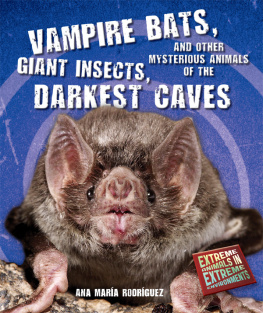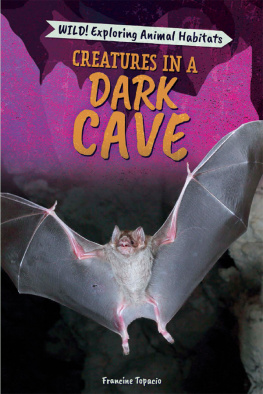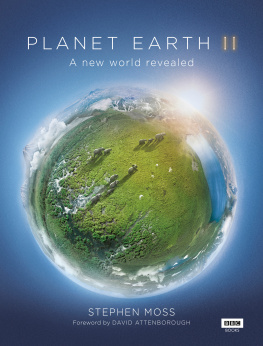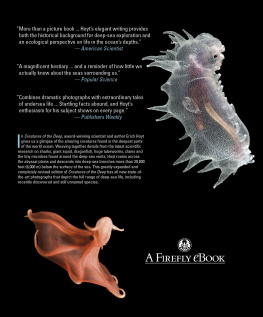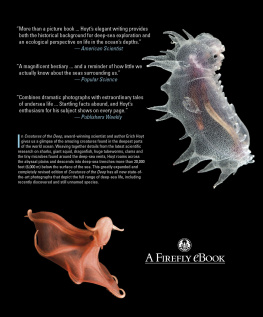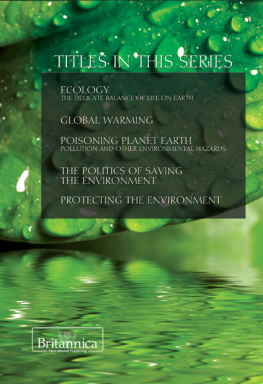LIFE IN THE DARK


Life
IN THE DARK
Illuminating Biodiversity in the Shadowy Haunts of Planet Earth
Dant Fenolio

2016 Johns Hopkins University Press
All rights reserved. Published 2016
Printed in China on acid-free paper
9 8 7 6 5 4 3 2 1
Johns Hopkins University Press
2715 North Charles Street
Baltimore, Maryland 21218-4363
www.press.jhu.edu
Library of Congress Cataloging-in-Publication Data
Names: Fenolio, Dant B. (Dant Bruce)
Title: Life in the dark : illuminating biodiversity in the shadowy haunts of planet earth / Dant Fenolio.
Description: Baltimore : Johns Hopkins University Press, 2016. | Includes bibliographical references and index.
Identifi ers: LCCN 2015010640| ISBN 9781421418636 (hardcover : alk. paper) | ISBN 9781421418643 (electronic) | ISBN 1421418630 (hardcover : alk. paper) | ISBN 1421418649 (electronic)
Subjects: LCSH: Adaptation (Biology) | Habitat (Ecology) | Deep-sea animals. | Cave animals. | Parasites.
Classifi cation: LCC QH546 .F46 2016 | DDC 578.4dc23
LC record available at http://lccn.loc.gov/2015010640
A catalog record for this book is available from the British Library.
Special discounts are available for bulk purchases of this book. For more information, please contact Special Sales at 410-516-6936 or .
Johns Hopkins University Press uses environmentally friendly book materials, including recycled text paper that is composed of at least 30 percent postconsumer waste, whenever possible.

This book is dedicated to three individuals who have profoundly influenced me, Bart Fenolio, Jerry Balistreri, and Terry Freitas.
My father, Bart Fenolio, supported my interests at every turn, providing a foundation for learning and for investigating the natural world.
My closest childhood friends father, biologist Jerry Balistreri, allowed his son and friends, including myself, to tag along as he taught field courses. These early experiences profoundly shaped my career.
My undergraduate friend, biologist Terry Freitas, taught me a deeper appreciation for the struggles that wildlife faces because of human activities. Terry went on to help the Uwa people of Colombia in their struggle against an American oil company that drilled for oil on their land and against their will; he was abducted and murdered by FARC, one of the leftist rebel groups that once controlled much of Colombia, in 1999.
Thank you for everything each of you did to enrich my life.

Developmental stages of Murrays Abyssal Seadevil, Melanocetus murrayi.
Contents

NOTE TO THE READER
t his book is a collection of images depicting the magical creatures that I have spent my career studying. Whenever possible, the photos show them in their natural habitats, an exception being deepwater wildlife. Many of the subterranean life forms, fossorial animals, and inhabitants of termite mounds were photographed in situ, as I found them. Each of these creatures is part of a larger ecosystem. They cannot survive if their habitats are destroyed. Protecting these unique organisms requires conservation of their habitats. Conserving wildlife that spend their time in the dark will require humanity to recognize the value of biodiversity and work to protect it.
The book is intended to aid naturalists. At the end of some captions, I have included citations to encourage further reading. Many of the captions highlight interesting points of biology and ecology. Some of the information refers to indigenous peoples in the areas where I have worked and discusses links between these cultures and wildlife. I respect people who live close to nature; they are our best teachers with regard to the environment and wildlife. Indigenous peoples and belief systems are vanishing along with our fauna, as forests and other wild areas evaporate. Much will be lost if we lose the knowledge of the environment that these people command.
The general and chapter introductions are intended to be basic rather than exhaustive summaries of each subcategory of community living in the dark. A more comprehensive undertaking would be beyond the scope of a book of photographs. My hope is that these images will lead you to question what you know of nature and how you feel about the state of the environment. Ask yourself how you want your childrens and your grandchildrens life experience with the natural world to be.
Please celebrate biodiversity with me as you look through this book, and consider supporting any environmental movement with which you connect.

ACKNOWLEDGMENTS
f or helping me collect the subjects of the images included in this book, I am deeply indebted to dozens of biologists, ecologists, naturalists, field companions, locals, governments, and organizations. Ive listed their names at the end of the book.
I thank Ronald Javitch for his unwavering support. Without his generosity, this book would never have been published. The San Antonio Zoo and the Atlanta Botanical Garden allowed me the time to take many of the trips that produced the images, for which I am most grateful.
My grandfather and father, both avid outdoorsmen, provided me with early opportunities to interact with wildlife. My father, who signed up for SCUBA certification with me when I was quite young, supported my inter-est in wildlife. As I finished high school and throughout my undergraduate program at the University of Califor-nia, Santa Cruz, I spent summers working with and learning from herpetologist William W. Lamar in the tropics. After Bills tutelage, I became a graduate student of Janalee Caldwell, and my days of working in caves began with her encouragement. I thank Vic Hutchison, who never tired of discussing my passion for salamanders.
I have been enormously influenced by biologists, cavers, naturalists, and photographers, including Andy Charrier, Marty Crump, Mauricio Fabry, Andy Gluesenkamp, G. O. Graening, Andy Harris, Meg Lowman, Matt Niemiller, Jos Nuez, Tim Paine, Michael Ready, Henry Robison, Michael Slay, Daphne Soares, Jim Stout, Marcela Tirado, and Yahui Zhao. I learned a tremendous amount from these people and had oppor-tunities to photograph some remarkable wildlife with them. I thank Nelson Jorge da Silva Jr. and his team for teaching me about the wonders of Brazil. Jim OReilly spent countless hours with me talking about caecilian captive care and biology while I was guided through my PhD work by Kathryn Tosney-many thanks to both.
I owe a debt of gratitude to the marine biologists who have given me access to their deep-sea cruises, in-cluding Jos Torres, Greg Cailliet, and Tracy Sutton. Time spent on research ships with these profes-sionals rank among my fondest memories.
Next page

